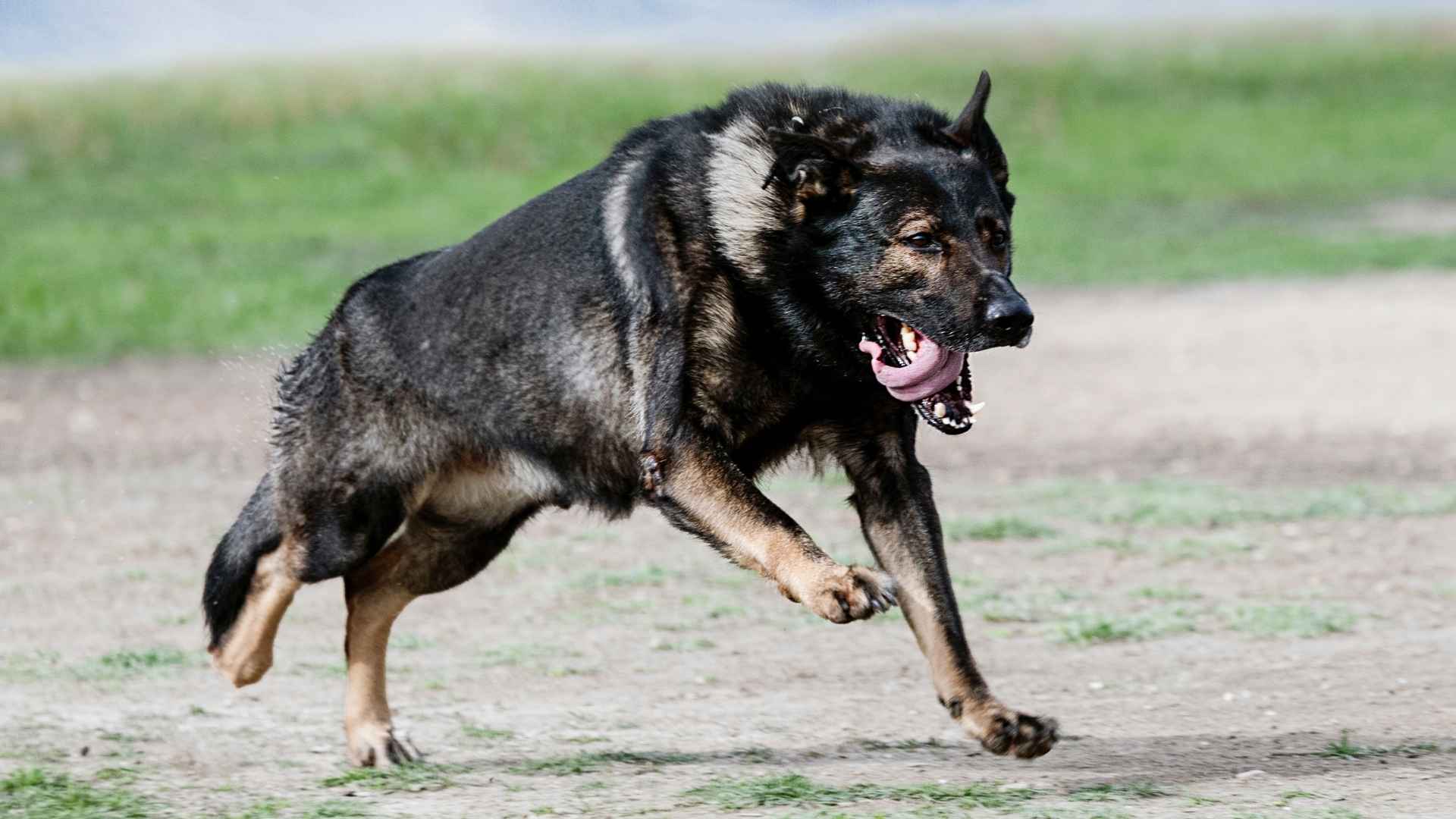From pulling heavy sleds through snow to guarding livestock from predators, dogs have long been bred for strength, resilience, and purpose. Throughout history, certain breeds have stood out not only for their imposing appearance but for their ability to perform physically demanding tasks with unwavering determination. These dogs are more than just muscular powerhouses—they embody endurance, intelligence, and loyalty.
When we talk about the strongest dog breeds, we’re not just referring to brute force. True canine strength is a well-rounded blend of physical might, stamina, protective instinct, and mental toughness.
Whether it’s a dog’s powerful bite, muscular frame, or tireless energy on the job, each breed has been shaped by generations of work and duty—from hunting game to hauling supplies across harsh terrains.
In this article, we’ll explore the breeds that represent the pinnacle of canine strength. These dogs aren’t just brawny—they’re brave, dependable, and bred to overcome some of the toughest challenges the animal kingdom can face.
Strongest Dog Breeds
1. Rottweiler
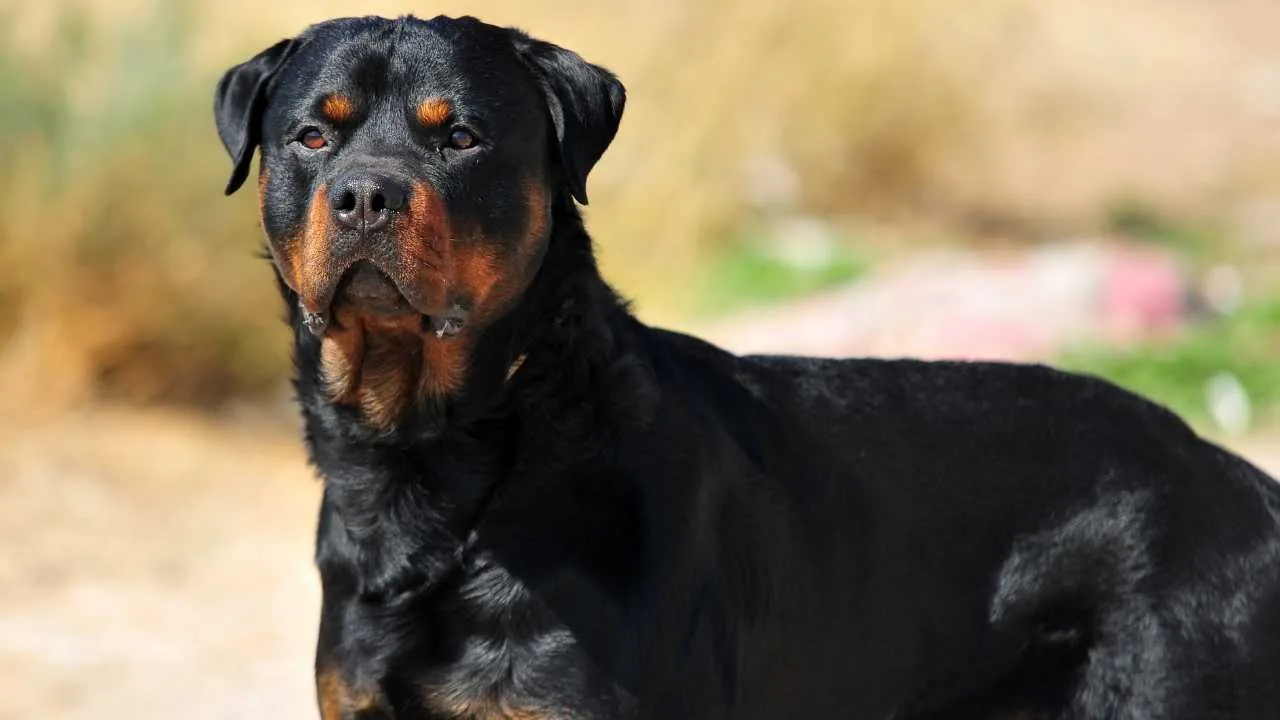
The Rottweiler is a formidable breed, descending from Roman drover dogs once used to herd livestock and protect goods for traveling butchers—hence the nickname “the Butcher’s Dog.”
Their powerful, compact frames and short, coarse black coats with tan or mahogany markings reflect centuries of utility-driven breeding. Traditionally deployed in cart pulling, herding, and guarding,
Rottweilers are now widely recognized as loyal guardians and police K-9s. Modern Rotties exhibit an imposing blend of muscle and intelligence, with some boasting a bite force of around 330 PSI—one of the highest among domestic breeds.
Their natural inclination to “nudge” can unintentionally knock over small children or elderly individuals, so supervision is recommended. According to the AKC, the Rottweiler is a gentle companion and guardian within the family, but regards the outside world with a calm and confident aloofness. They become great family pets.
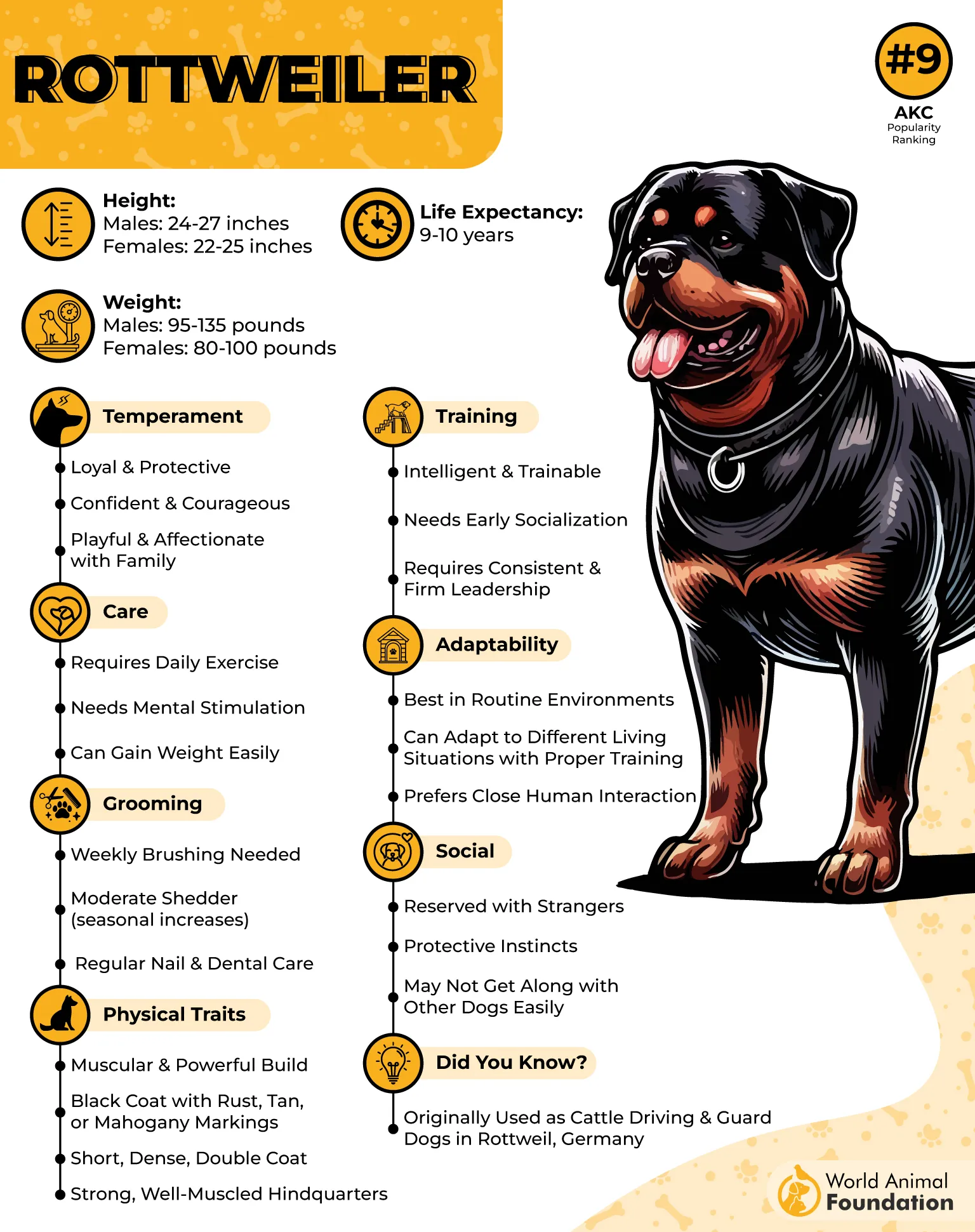
Exercise
Rottweilers are energetic and intelligent dogs that require at least 60 minutes of physical activity daily to maintain their physical and mental health. Without sufficient exercise, they may become restless and engage in undesirable behaviors like destructive chewing.
Structured activities such as obedience training, agility work, or even pulling weights can satisfy their working-dog instincts. Mental stimulation is equally essential—interactive toys, puzzle feeders, and task-based games help keep a Rottie’s sharp mind engaged.
Fun Fact: The Rottweiler featured as the babysitting dog in Alexandra Day’s beloved children’s book series “Good Dog, Carl” was inspired by the author’s own Rottie named Toby.
2. Great Dane
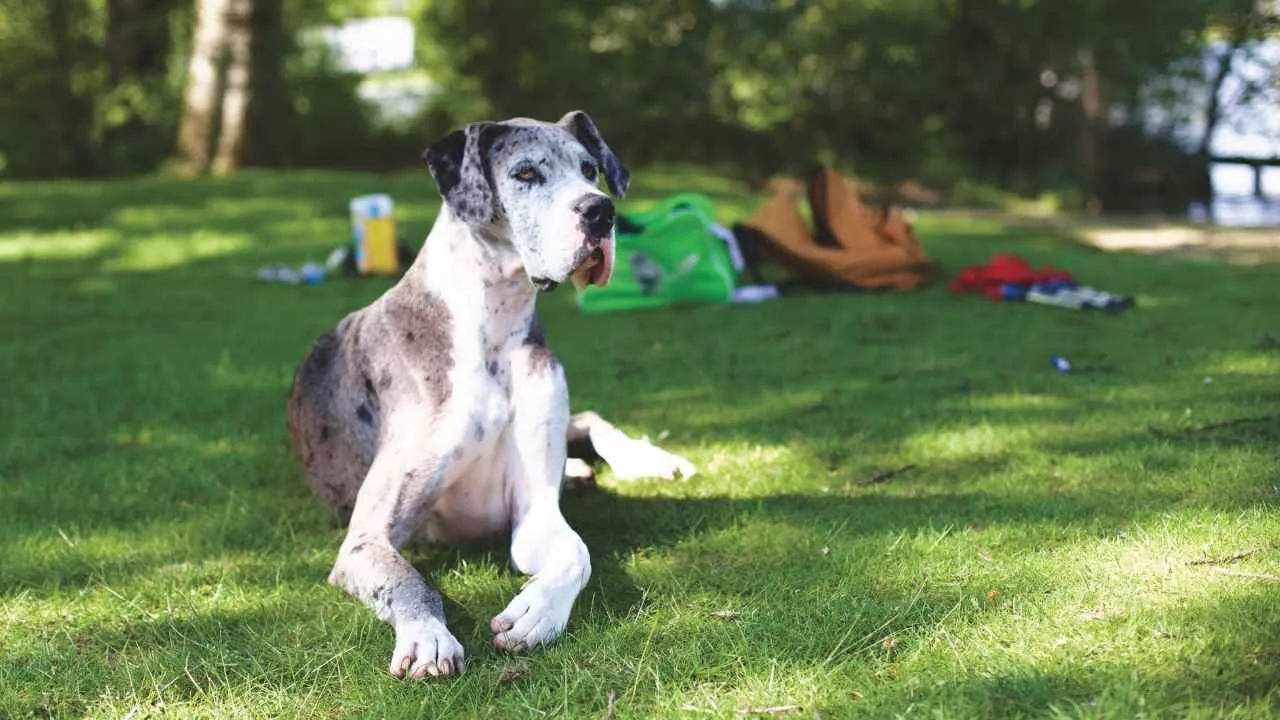
Also known as the German Mastiff or Grand Danois, the Great Dane is a towering, noble breed celebrated for its grandeur and strength. Originally developed in Germany for boar hunting, this gentle giant is often called the “Apollo of Dogs” due to its commanding presence.
Despite its name, the Great Dane has no Danish heritage. WebMD states that Great Danes are a well-known German dog breed, recognized for their impressive and towering size. Males can reach up to 32 inches in height and weigh between 110 and 175 pounds.
Their short, sleek coat appears in a variety of colors, including fawn, black, harlequin, and mantle. The breed is part of the Working Group and typically enjoys a lifespan of 7 to 10 years.
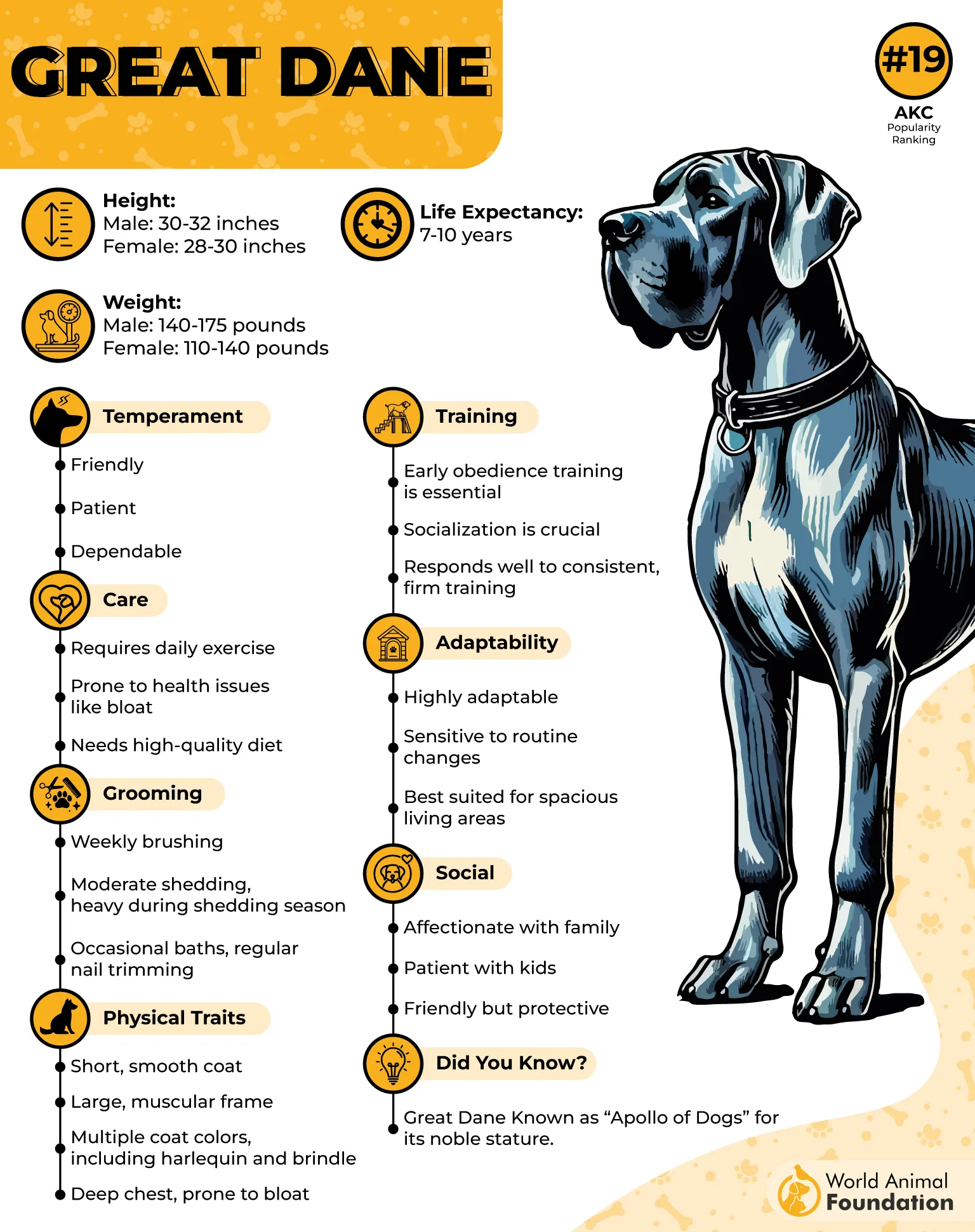
Exercise
Although they are powerful and impressively built, Great Danes have surprisingly moderate energy levels. They require daily exercise, but it should be well-regulated—too much intense activity, especially in their first year, can strain their growing joints.
A couple of medium-paced walks and some gentle play sessions each day are ideal. Because of their size, Great Danes need ample space to move comfortably, both indoors and outdoors. Early training is crucial to manage their strength and ensure they don’t become unwieldy.
Fun Fact
The Great Dane is Pennsylvania’s official state dog and has appeared in media from Scooby-Doo to Disney’s The Ugly Dachshund.
3. German Shepherd
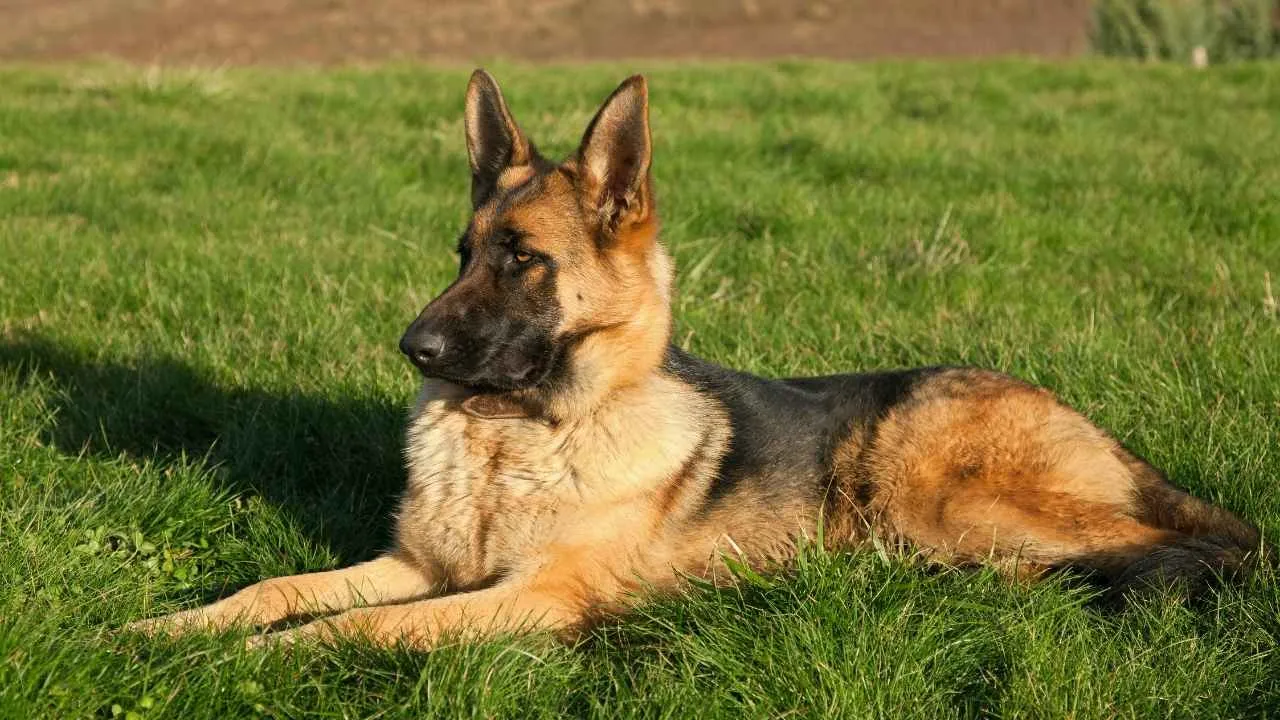
Also known as the Alsatian, the German Shepherd is a striking and intelligent working dog developed in Germany in the late 19th century. Originally bred by cavalry officer Max von Stephanitz to herd and guard livestock, this breed quickly proved itself in various demanding roles—including police, military, and rescue work.
With a strong, muscular frame, German Shepherds stand 22 to 26 inches tall and weigh between 50 and 90 pounds. According to Britannica, the breed has a dense coat made up of coarse, medium-long, straight or slightly wavy outer hair and a soft, short undercoat. Its coloring can vary from white or pale gray to black, with common combinations including gray and black or black and tan.
This herding breed typically lives 12 to 14 years and boasts a bite force of 238 PSI—an impressive stat that contributes to its reputation as one of the strongest and most versatile canines.
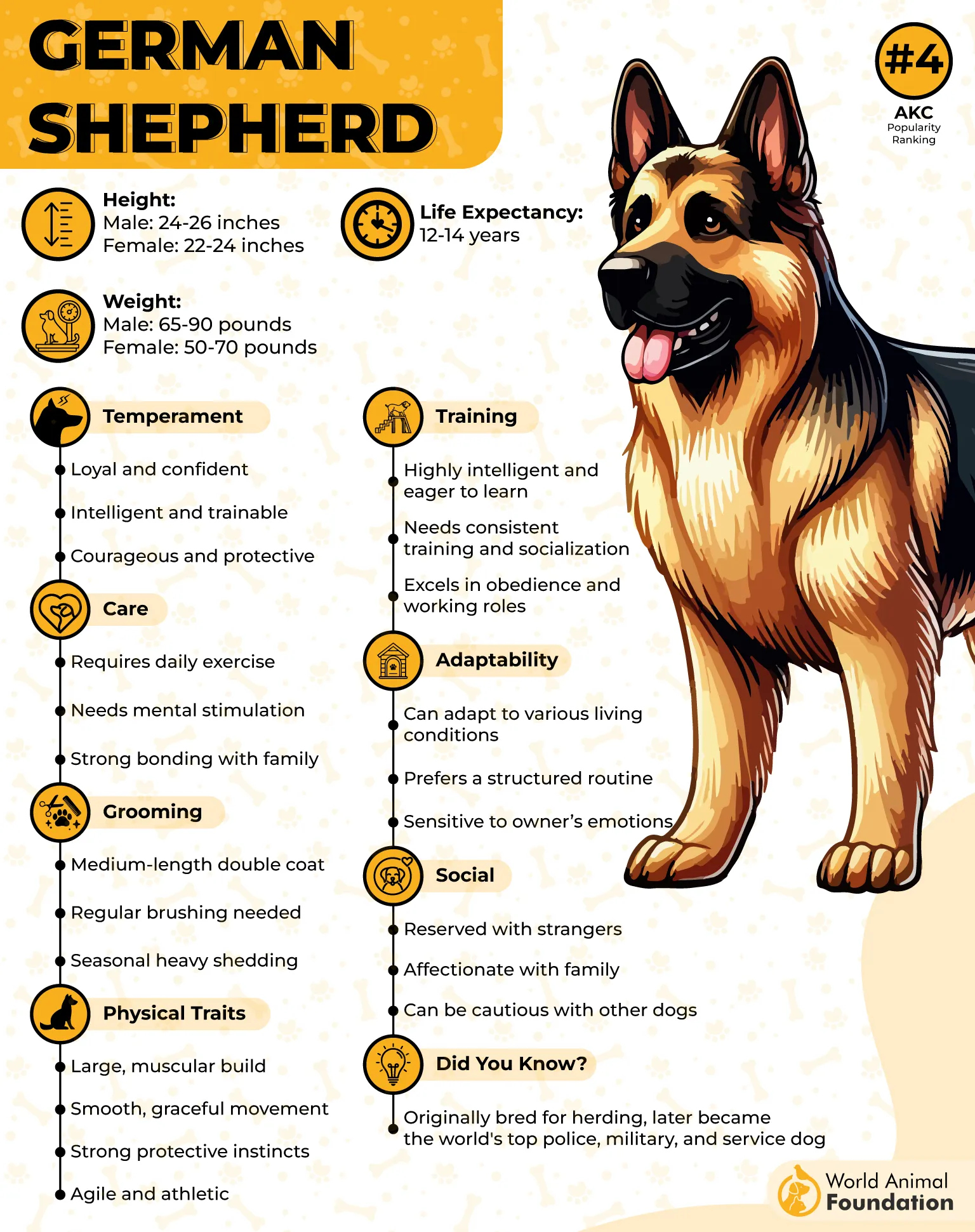
Exercise
These high-energy guard dogs demand substantial physical and mental stimulation to stay healthy and well-behaved. Daily walks are a must, but to truly thrive, German Shepherds need space to run, structured training sessions, and play that challenges both body and mind.
Activities like proper training or agility courses suit them well. Without adequate activity, their sharp minds and physical power can manifest as destructive behavior or anxiety.
Fun Fact: In 1990, a German Shepherd named Orient helped his blind owner, Bill Irwin, become the first blind hiker to complete the Appalachian Trail.
4. Saint Bernard
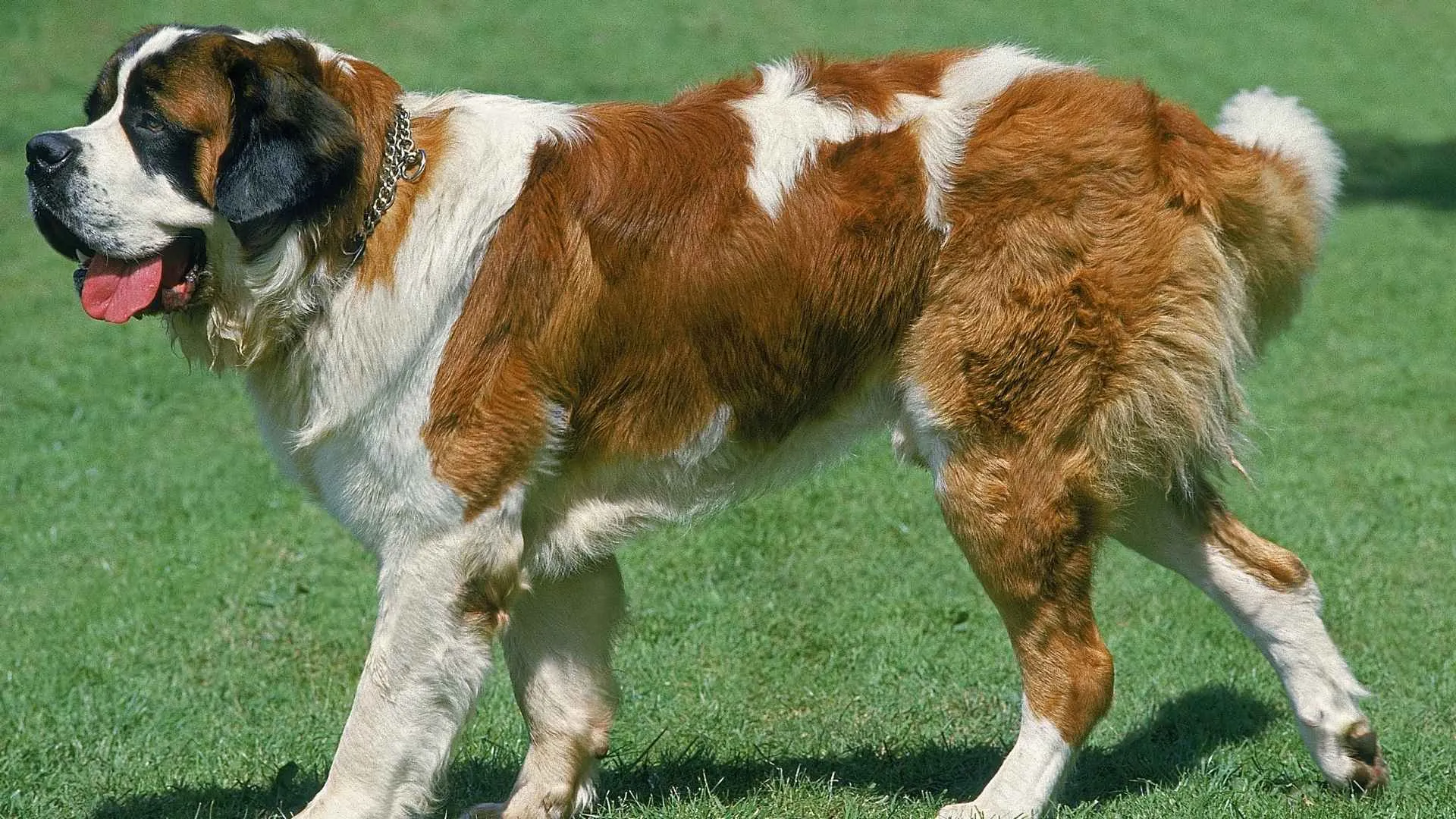
The Saint Bernard, one of the most powerful and recognizable dog breeds, was originally developed by monks in the Swiss Alps for pathfinding and alpine rescue missions. These colossal dogs were bred to navigate snowbound trails, carrying supplies or even dragging travelers to safety—feats that required a perfect blend of muscle, endurance, and heart.
With their barrel-shaped chests, broad heads, and soulful eyes, they exude both strength and gentleness. Despite their intimidating size, Saints are famously affectionate and are known for their patience around children, earning them a reputation as “gentle giants.”
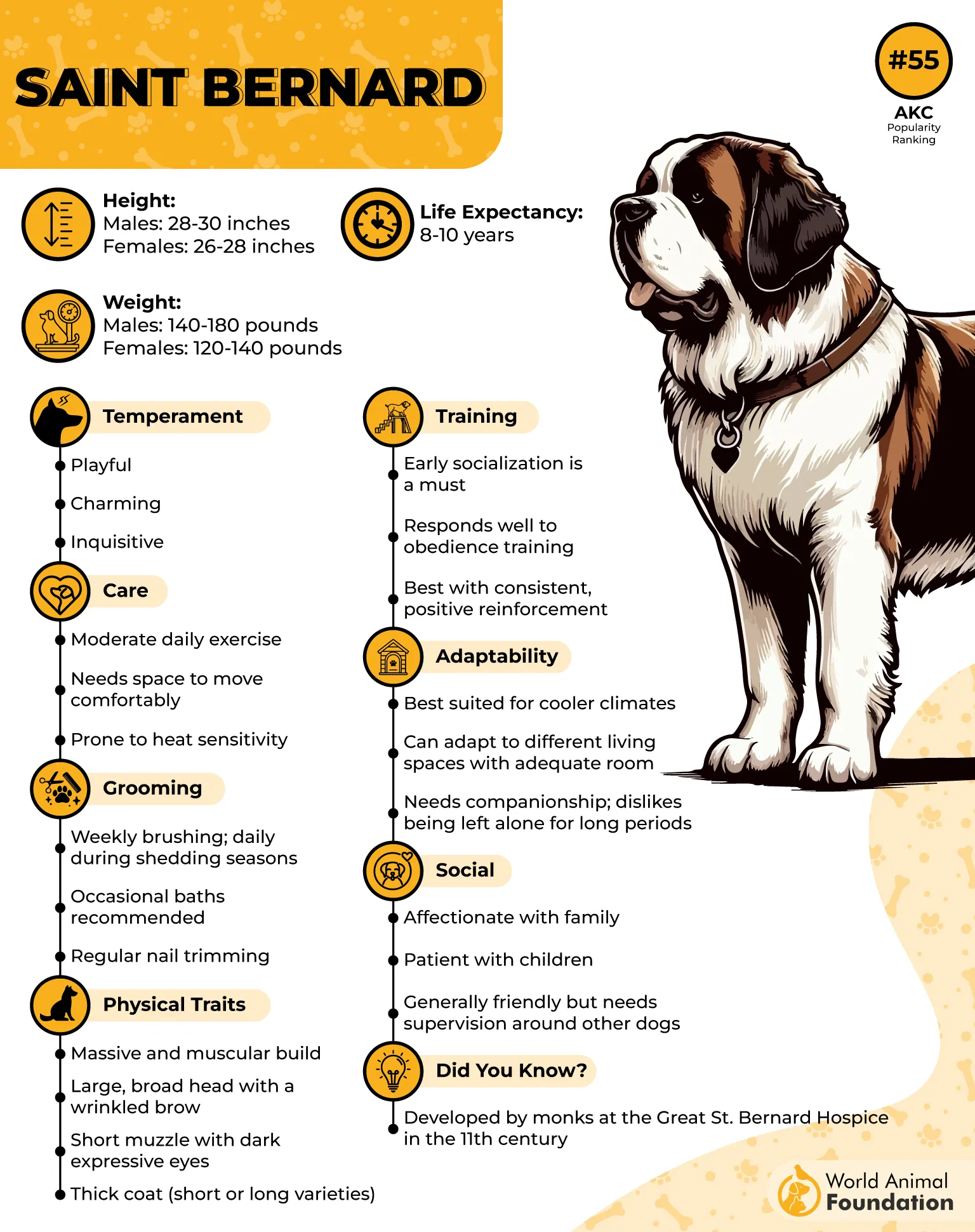
Exercise
These devoted dogs may appear laid-back, but they do benefit from consistent physical activity. A daily 30-minute walk is typically sufficient, although many enjoy longer strolls or hikes when the weather is cool. Because of their size and heavy build, overexertion in hot weather should be avoided.
While not hyperactive, regular movement helps maintain their joint health and prevents obesity, a concern in large breeds. They particularly thrive when they can stretch out in spacious environments, so a roomy yard is ideal.
Did you know? The myth of Saint Bernards carrying barrels of brandy during rescues was inspired by an 1820 painting, not a historical fact.
5. Alaskan Malamute
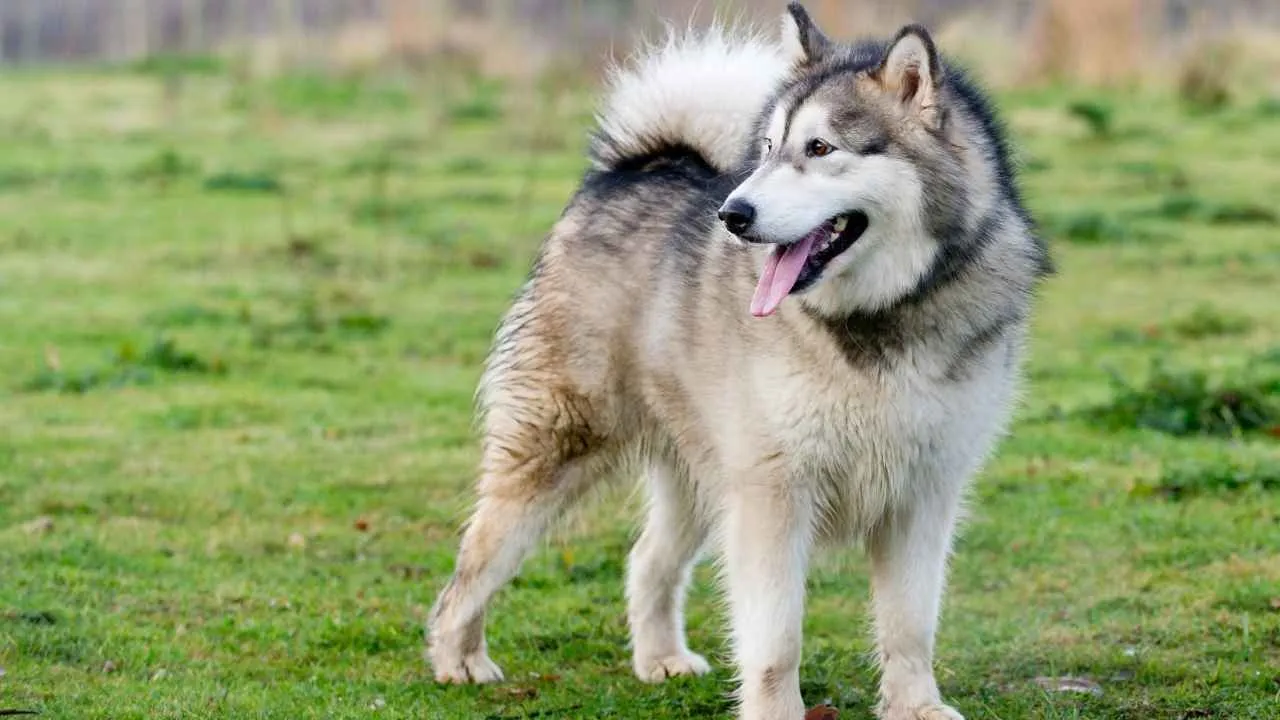
The Alaskan Malamute—often called the “Mal”—is a robust Arctic breed developed by the native Mahlemut people of Alaska. Designed for strength and endurance, these dogs were bred to haul heavy sleds across vast, frozen terrain. With a powerful, muscular build, Mals typically weigh between 75 and 85 pounds and stand around 23 to 25 inches tall.
They sport a dense double coat that insulates them against extreme cold and often appears in shades of gray and white or black and white, sometimes with cap-like or mask-like facial markings. Their broad head, plume-like tail carried over the back, and loyal, friendly nature reflect their working heritage. The breed falls under the Working Group and enjoys a life expectancy of 10 to 14 years.
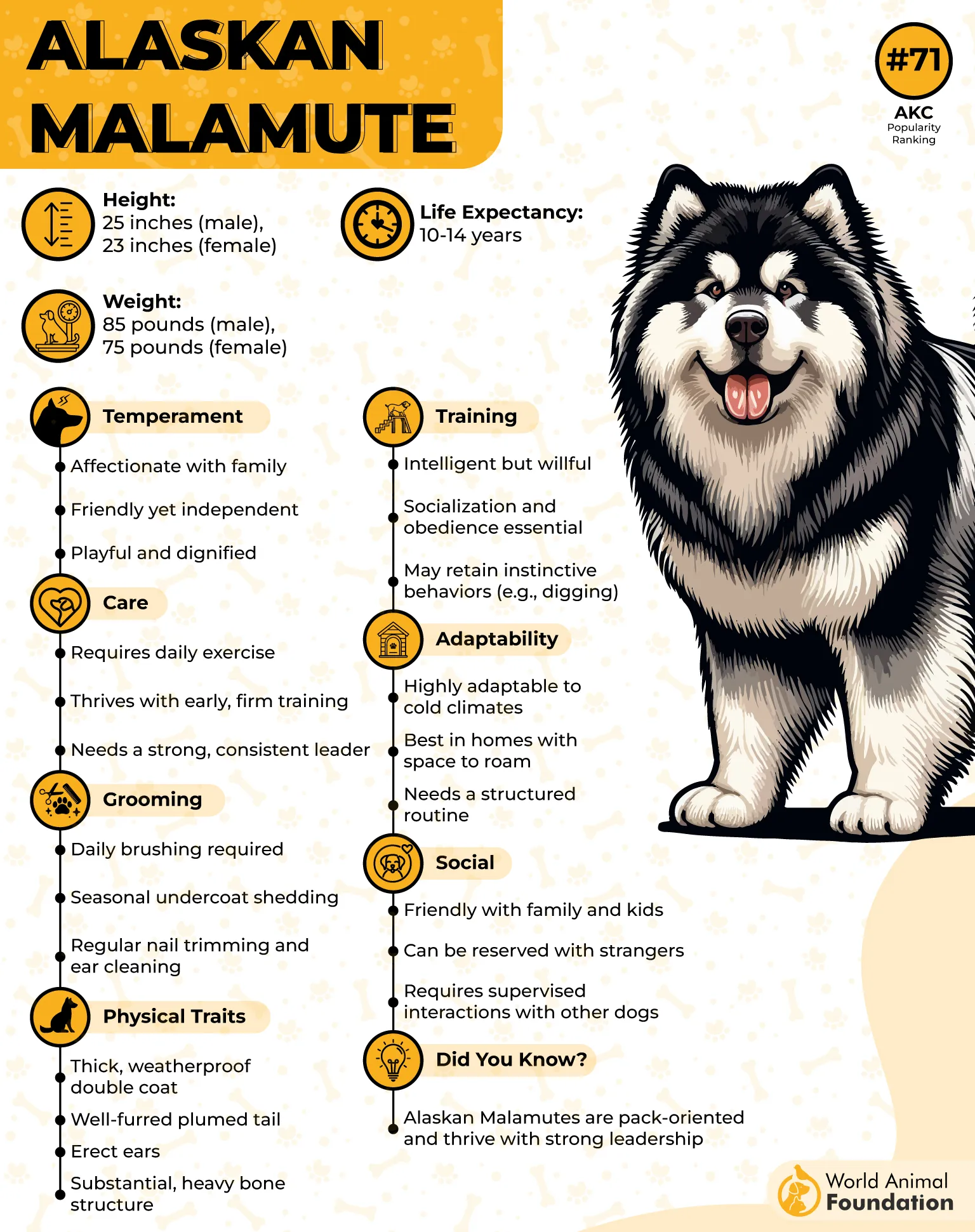
Exercise
True to their sled-pulling ancestry, Alaskan Malamutes have exceptionally high energy levels and require over two hours of exercise daily. This isn’t a breed for couch potatoes; they thrive on vigorous activity and mental stimulation.
Because they are easily distracted and can go off on independent adventures, it’s best to keep them leashed or in secure, fenced areas. During warmer months, exercise should be moderated due to their thick coats, which make them prone to overheating.
Fun Fact: Alaskan Malamutes are among the most ancient dog breeds and even accompanied explorer Richard E. Byrd to Antarctica. George Lucas also modeled Chewbacca after his own Malamute, “Indiana” .
6. Doberman Pinscher
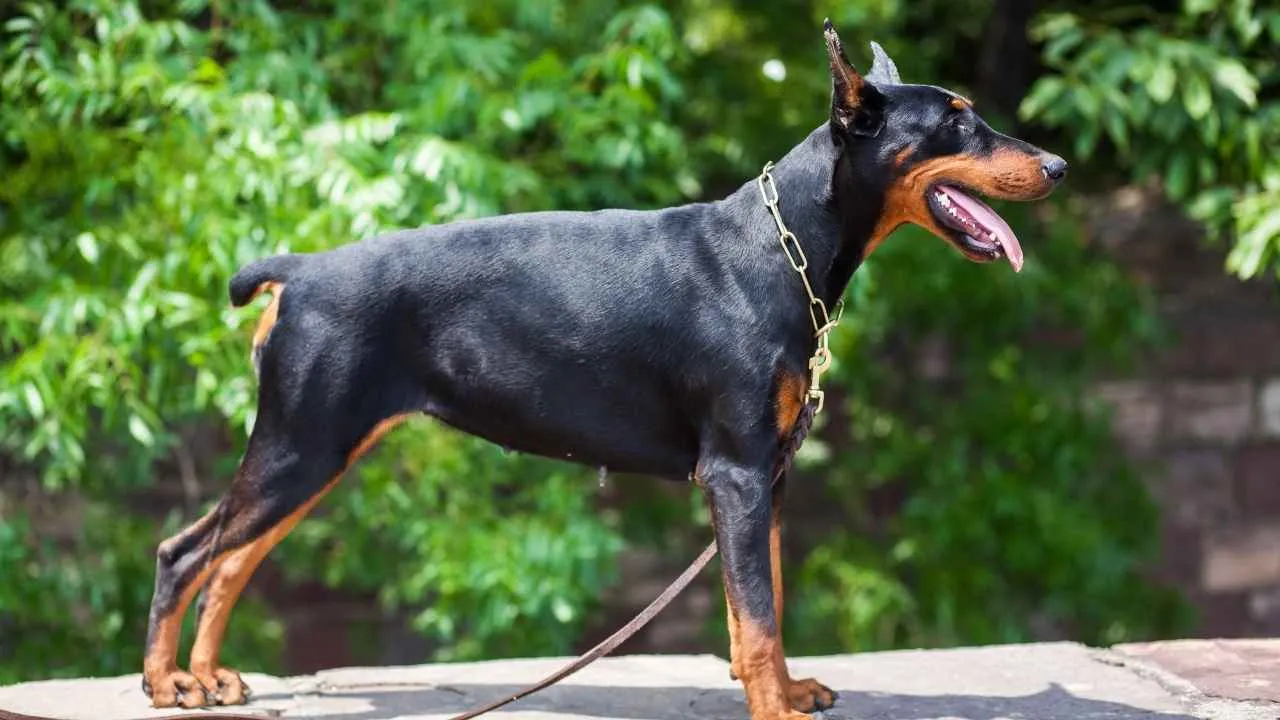
Also known as the Dobie or Dobe, the Doberman Pinscher hails from Apolda, Germany, where it was developed by Karl Friedrich Louis Dobermann around 1890. Aimed at creating a reliable companion and protector, this breed is the result of crossbreeding several strong and intelligent dogs like the Rottweiler, Weimaraner, and German Pinscher.
Dobermans are admired for their streamlined, muscular physiques and a commanding presence. Standing between 24 to 28 inches tall and weighing 65 to 100 pounds, they exhibit sleek coats in shades of black, red, blue, and fawn, often accented with rust markings.
Their working group status reflects their high stamina, intelligence, and unwavering loyalty, which make them excellent candidates for police, military, and personal protection roles. With a bite force of 305 PSI and a life expectancy of 10 to 12 years, Dobermans embody strength and agility.
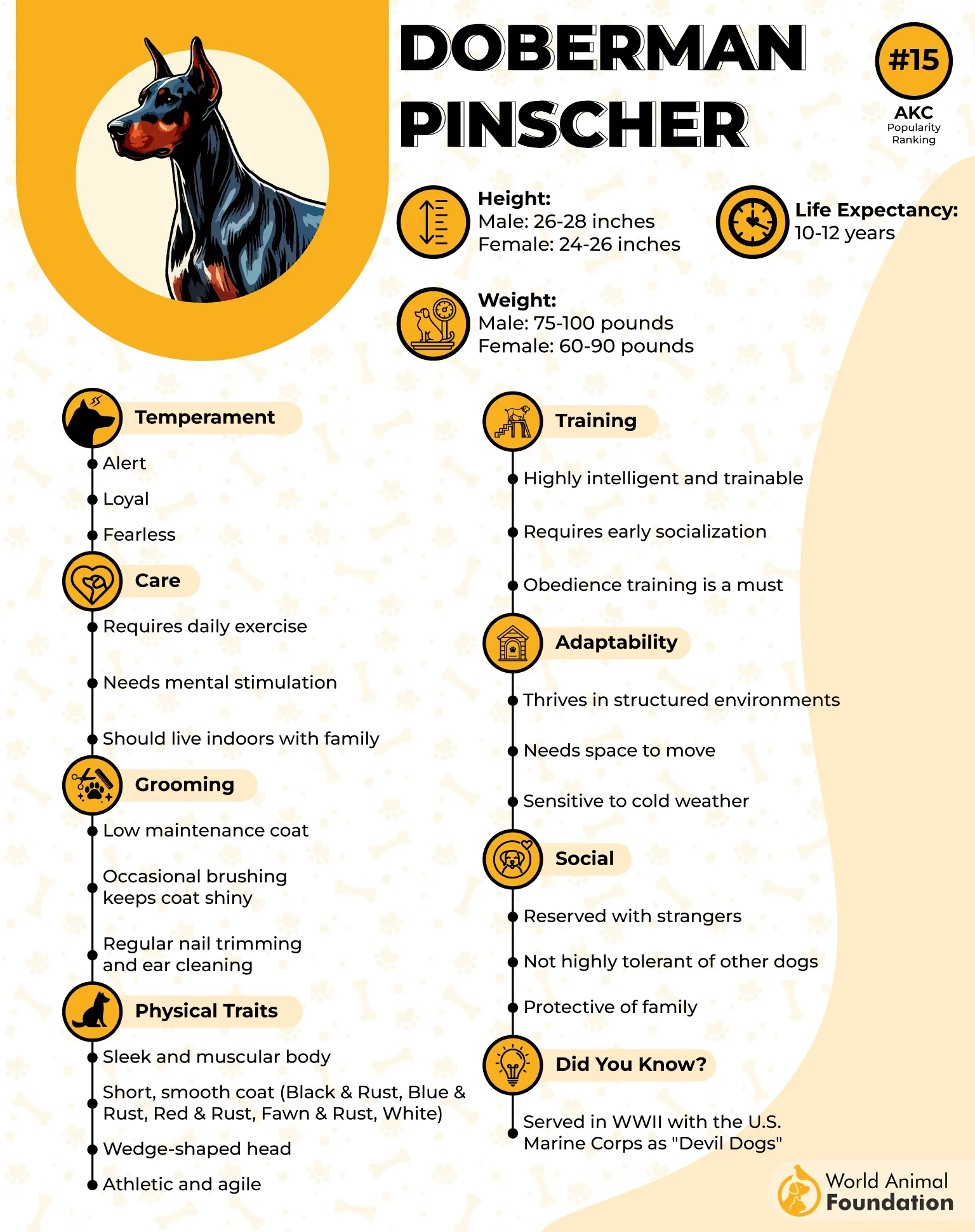
Exercise
These police dogs thrive on both physical and mental stimulation. This breed requires a minimum of 1.5 to 2 hours of daily activity, including brisk walks, running in secure areas, or interactive play. Mental enrichment through obedience training, agility exercises, or puzzle toys is essential to prevent boredom-related behaviors.
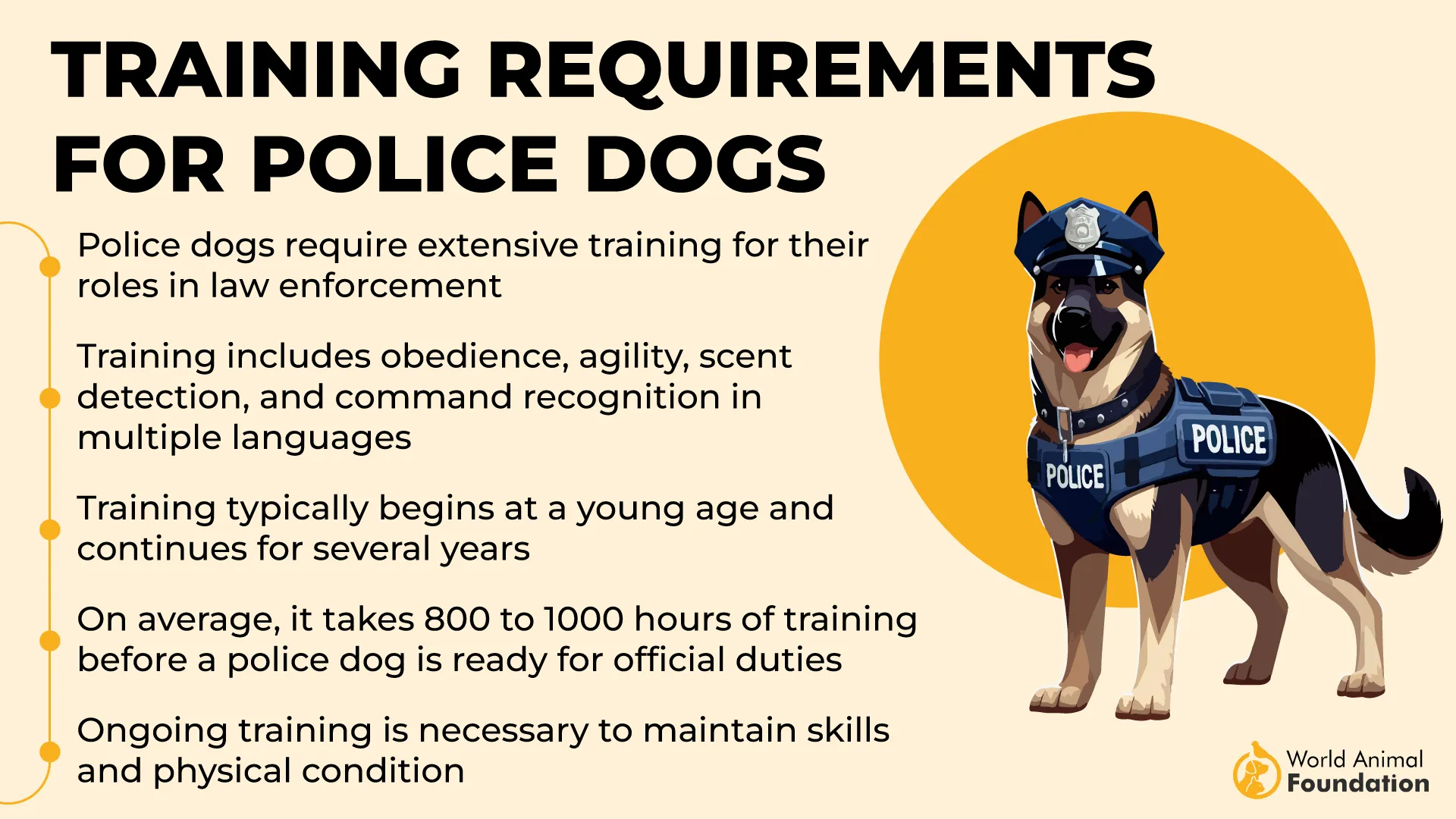
While adult Dobermans can handle vigorous routines, puppies should avoid high-impact activities to protect developing joints. Controlled play and short walks are best for young pups, gradually increasing intensity as they mature, typically around 18 months.
Did you know?
Kurt the Doberman was the first canine casualty in the Battle of Guam during WWII and is honored with a statue at the National War Dog Cemetery..
7. Rhodesian Ridgeback
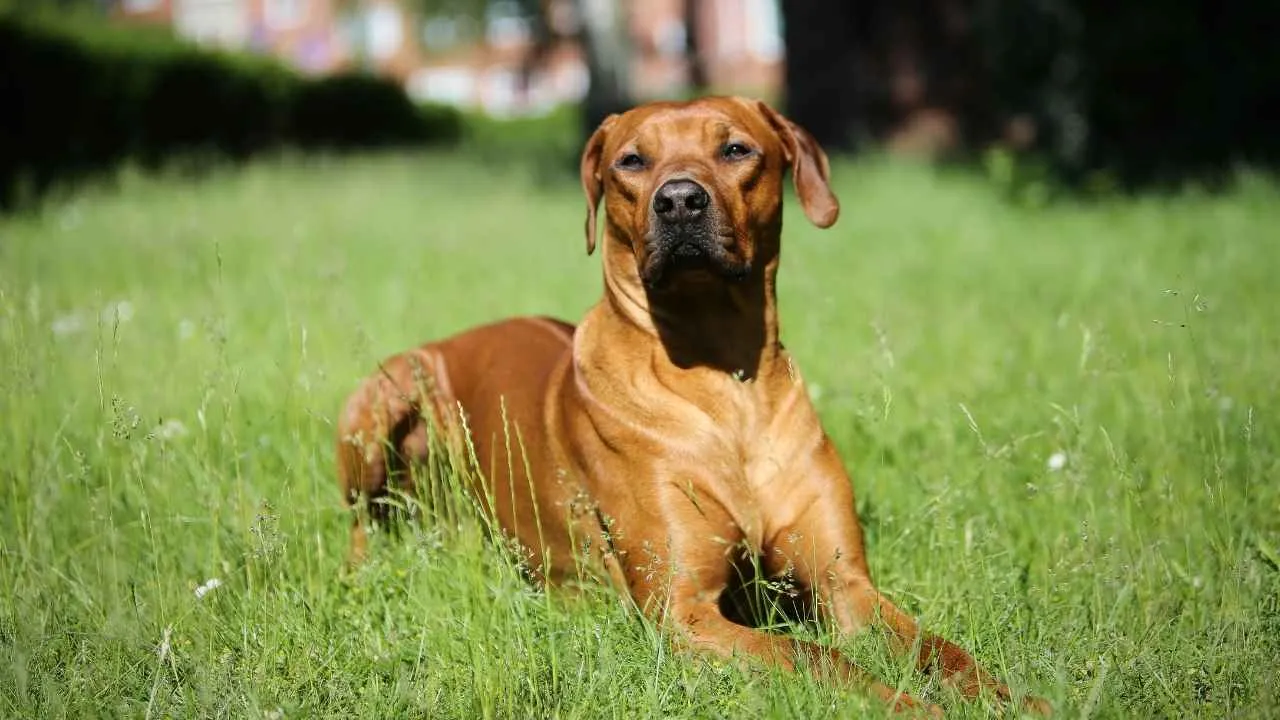
Originally hailing from Southern Africa, the Rhodesian Ridgeback—also known as the African Lion Hound—is a powerful and versatile breed. It was developed by interbreeding native African dogs with European breeds brought by Dutch, German, and Huguenot settlers in the 16th and 17th centuries. The goal was to create a hardy, all-purpose dog capable of hunting large game, including lions.
This powerful dog gets its name from the unique “ridge” of hair along its back that grows in the opposite direction from the rest of the coat—a distinct hallmark. Standing between 24 to 27 inches tall and weighing 65 to 75 pounds, these dogs are lean yet muscular, boasting a wheaten coat that ranges from pale gold to deep red.
They have medium-sized flopped ears, expressive amber or yellow eyes, and a robust build designed for speed and endurance. With a lifespan of about 10–12 years, the Rhodesian Ridgeback is a striking and loyal companion best suited for experienced dog owners.
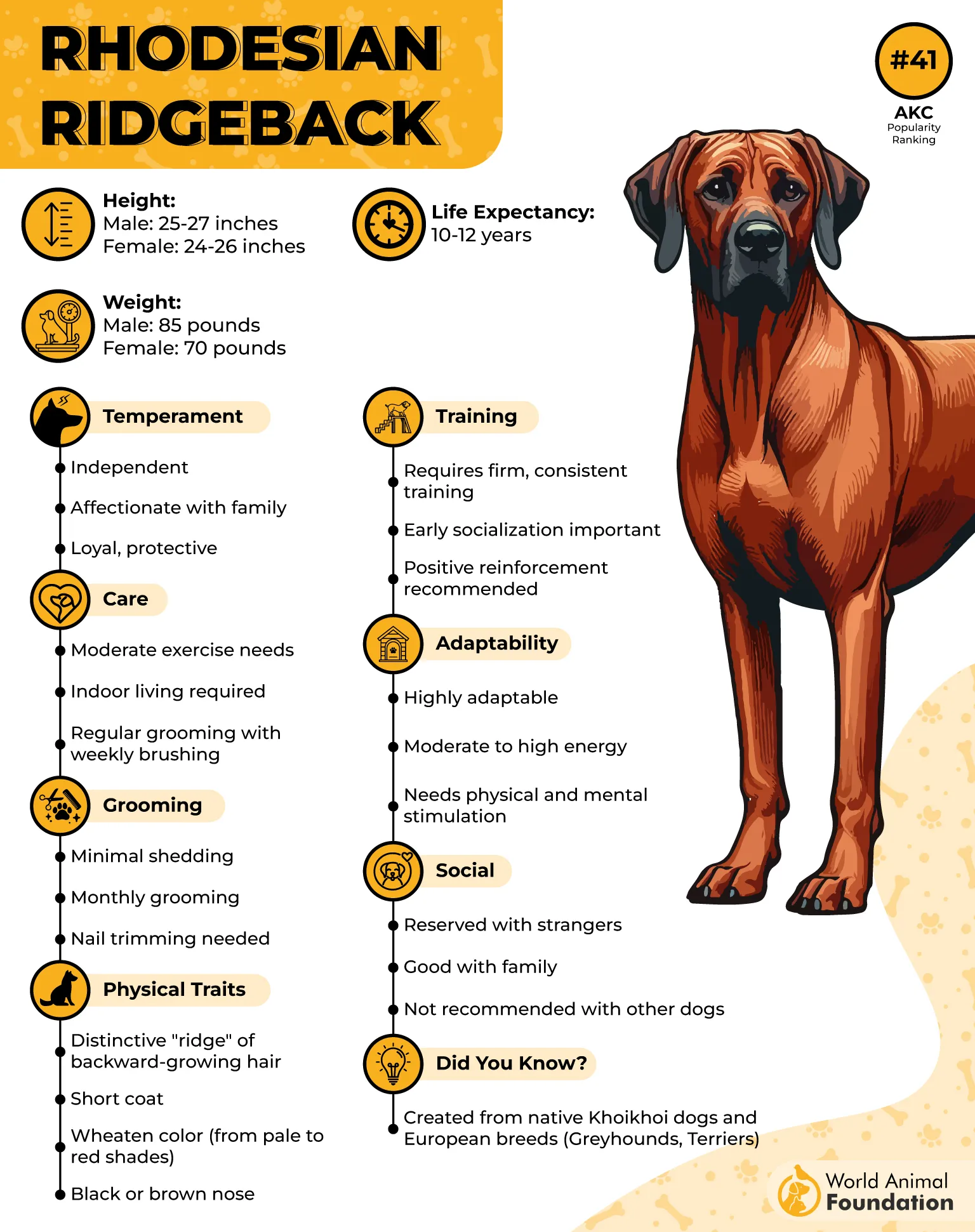
Exercise
Rhodesian Ridgebacks are incredibly athletic and energetic, requiring consistent and structured exercise to stay mentally and physically fit. While a daily brisk walk is a must, they truly thrive when given ample space to run and explore.
Their hunting heritage means they benefit from activities like tracking, agility, and fetch games. Without sufficient physical and mental stimulation, they may become restless or destructive. Owners should incorporate regular, off-leash play in secure areas and provide mentally engaging tasks to channel their instincts productively.
Fun Fact: This breed was originally used to track and corner lions, not kill them—a testament to its courage and controlled strength.
Conclusion
Strength in dogs comes in many forms—raw power, stamina, and unshakable loyalty. From ancient mastiff breeds like the Tibetan Mastiff to athletic guardians such as the Rhodesian Ridgeback, the strongest dogs are more than just muscle—they’re brave, intelligent, and deeply bonded with their family members. Some, like the Kangal Dog, are known for having one of the strongest bite forces, originally bred to protect livestock from predators like wolves and wild boar. These traits, while impressive, require responsible ownership and early socialization from a young age to ensure balanced behavior.
Among other breeds, American Pit Bull Terriers, Pit Bulls, and American Bulldogs also rank high in strength and determination. Though often misunderstood due to headlines about dog bites, many of these dogs are affectionate, trainable, and thrive in active, loving homes. Whether it’s pulling sleds like the Siberian Husky or protecting territory, these breeds showcase just how diverse and powerful dogs can be. Their strength isn’t just physical—it’s in their purpose, history, and loyalty.


